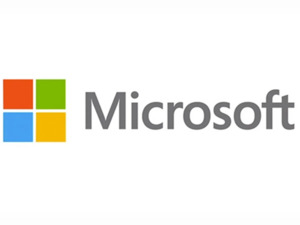https://www.engadget.com/microsoft-certifications-training-d…
Microsoft is dropping the cost of Microsoft Certifications exams to $15 (if users “self-attest” that their employment was impacted by COVID-19). Usually, those exams cost more than $100. Participants can schedule an exam from September to the end of the year, and they’ll have until March 31st to complete it.
What we are launching today
Today’s global skills initiative is based on months of planning across Microsoft to provide meaningful help to 25 million people globally by the end of 2020. Our activities will be focused on three areas:
Data and analytics to better understand in-demand skills and jobs
Several years ago, LinkedIn operationalized the world’s first Economic Graph to track workforce trends and provide a window into emerging skills gaps. The Economic Graph is a digital representation of the global economy based on more than 690 million professionals, 50 million companies, 11 million job listings, 36,000 defined skills, and 90,000 schools. In short, it is all the data on LinkedIn and shows available jobs, their required skills, and the existing skills job seekers have.
The Economic Graph also makes it possible to spot in-demand skills, emerging jobs, and global hiring rates. These insights help connect LinkedIn members to better opportunities and assist governments and organizations as they create economic opportunity for the global workforce.
As part of this new initiative, LinkedIn is sharing free, real-time labor market data and skills insights to help governments, policymakers and business leaders understand what’s happening in their local labor markets: what companies are hiring, the top jobs companies are hiring for and the trending skills for those jobs. This data can be accessed using a new interactive tool at linkedin.com/workforce. Data is available for more than 180 countries and regions (150+ cities, 30+ countries). Users can search by country or region and download the data sets.
We have also used the Economic Graph as a critical planning resource for today’s skills initiative, by identifying the key jobs and horizontal skills that are most widely in demand and creating learning paths for these via LinkedIn Learning. Using this data, we identified 10 jobs that are in-demand in today’s economy and are well positioned to continue to grow in the future. These 10 jobs were identified as having the greatest number of job openings, have had steady growth over the past four years, pay a livable wage, and require skills that can be learned online.
Become a Software Developer
Become a Sales Representative
Become a Project Manager
Become an IT administrator (Prepare for CompTIA Network+ Certification)
Become a Customer Service Specialist
Become a Digital Marketing Specialist
Become IT Support / Help Desk (Prepare for the CompTIA A+ Certification)
Become a Data Analyst
Become a Financial Analyst
Become a Graphic Designer
Much of our skills work is targeted at providing people with the skills for these disciplines.
Free access to learning paths and comprehensive resources to help people develop the skills needed for in-demand jobs
To help people pursue jobs in these areas, we are making LinkedIn Learning paths aligned with each of these roles available free of charge through the end of March 2021. Each learning path includes a sequence of video content designed to help job seekers develop the core skills needed for each role. Each learning path is currently available in English, French, Spanish, and German.
LinkedIn Learning’s library for each learning path also includes collaborative courses, all taught by industry-expert instructors, allowing individuals to move through content and demonstrate their learning with a certificate of completion. Covering a broad range of skills from entry-level digital literacy to advanced product-based skills for technology roles, these role-based learning paths provide numerous opportunities for people along a learning continuum to reskill and upskill. We believe these are the types of resources that can place in-demand roles within reach of millions of job seekers.
In addition to these LinkedIn Learning paths, we are offering through Microsoft Learn free and in-depth technical learning content that also supports these roles. For roles that are more technical in nature, job seekers can go deeper on specific role-based Microsoft technologies with Microsoft Learn modules, gaining the most in-demand skills on widely used technologies.
We will also enable job seekers pursuing developer roles to access the GitHub Learning Lab to practice their skills. GitHub Learning Lab is a bot-based learning tool that uses repositories to teach technology, coding, Git, and GitHub via real-life, demo-based modules. This means that as job seekers engage in learning paths, they will have the opportunity to practice newly acquired skills by completing realistic projects in a personalized GitHub repository.
To provide people with easier access to the soft skills needed to pursue a new job, we are offering free access to four horizontal LinkedIn Learning paths. These are:
Job seeker – Finding a Job During Challenging Economic Times
Critical soft skills – Master In-Demand Professional Soft Skills
Digital transformation – Digital Transformation in Practice: Virtual Collaboration Tools
Allyship and inclusive conversations – Diversity, Inclusion, and Belonging for All
LinkedIn Learning’s library for each learning path also includes collaborative courses, all taught by industry-expert instructors, allowing individuals to move through content and demonstrate their learning with a certificate of completion. Covering a broad range of skills from entry-level digital literacy to advanced product-based skills for technology roles, these role-based learning paths provide numerous opportunities for people along a learning continuum to reskill and upskill. We believe these are the types of resources that can place in-demand roles within reach of millions of job seekers.


Microsof sounds like a scammers company.